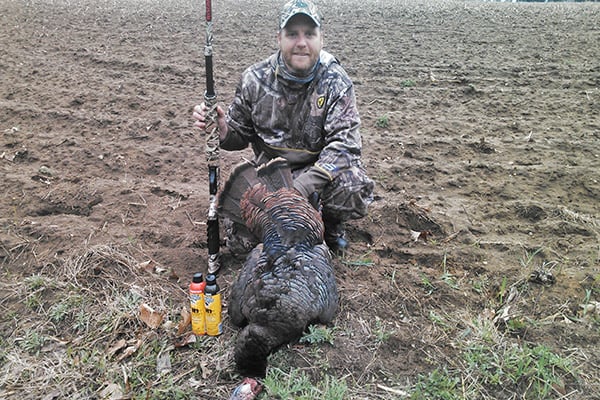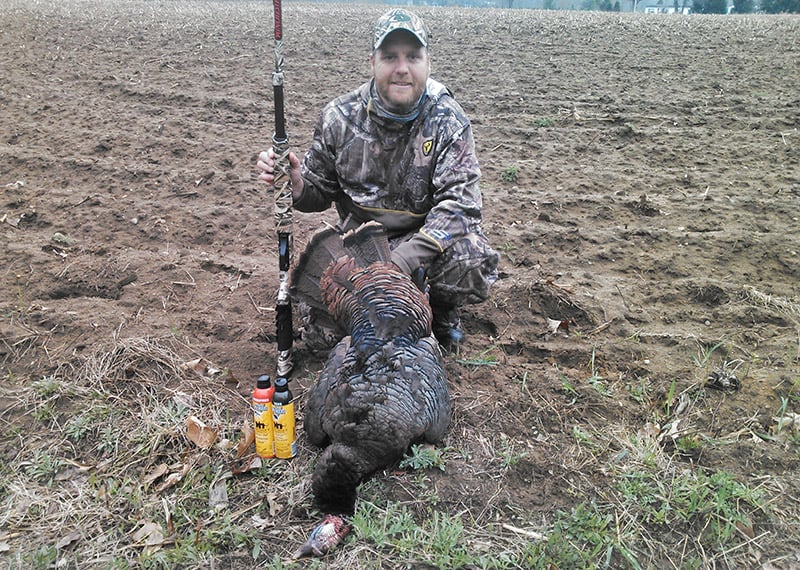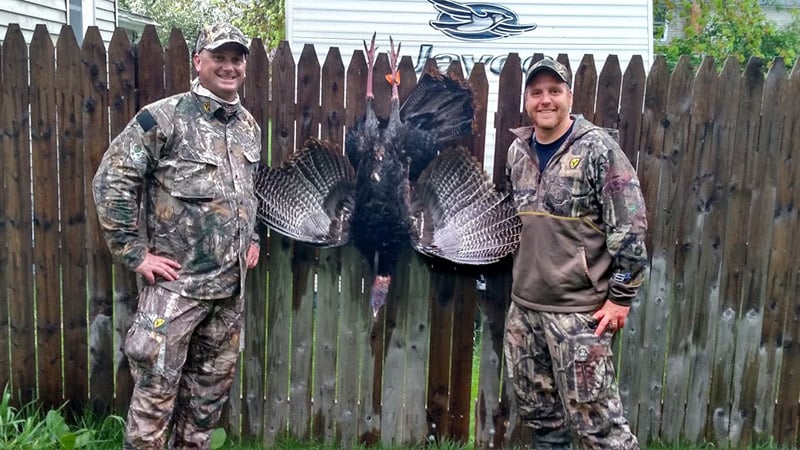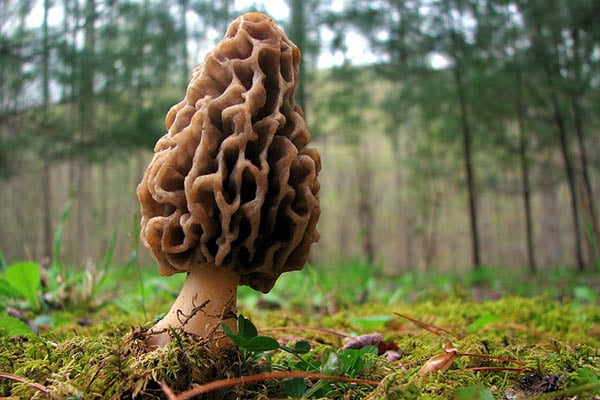Last Updated on
Driving to my new hunting location helped to reset my hunting patience for the day. I had been in the woods since 5:30 am. It was now 11:00 am and my game bag was empty. Most hunters would have given up long ago, but not me. I had a plan and was sticking to it. A short time later, around 11:25 am, my plan had worked. Three long beards approached and responded to my sweet calls like they had read my plan. By 11:30 am, I had one giant Tom slung over my shoulder heading back to the truck. Success!
I love to turkey hunt, but sitting for a long duration is a challenge. When I first started turkey hunting, I’d hunt in the same spot until about nine o’clock and then head home. On the way home, I’d see toms strutting everywhere. Through observation, I soon realized something was wrong. Since this time of “enlightenment,” I developed a solid plan to hunt turkeys in phases. My plan has worked very well for me and hopefully it will for you too!
The key to the plan is each phase of the hunt consists of the time of the day that typically corresponds to certain turkey behaviors. I hate wearing a watch, but when I am executing my hunting plan, I use the clock on my cellphone to keep me on track, work my hunting phases and remain disciplined. If I get bored or distracted, hunting time seems to move very slowly, and the clock keeps me honest. When heading out on a turkey hunt, I make sure to have supplies, food, and water, because I don’t plan to come home until a gobbler is down or it’s dark.
It is important to check local hunting regulations. In my area hunting is permitted all day, yet in some states, you may not be able to do so. Either way, maximize your time in the field and invest your time wisely.
Turkey Hunting Gear
I have a dedicated process for preparing for the hunt. I usually dress in ScentBlocker Merino wool base layers, followed up with my Trinity Knock Out Pants. On top, I’ll wear the Trinity 1.5 Performance shirt and one of my ScentBlocker hoodies. Scent control doesn’t matter for turkeys, but I like to use it in the spring anyway for a few reasons. First, I don’t want to spook any deer! Spooked deer will alarm any nearby turkeys and send them running to the hills. Secondly, I like to try and shoot coyotes whenever possible, and they are very active in the spring. Being scent free is crucial for harvesting a coyote.
As the spring gets warmer through the season, the biting bugs like mosquitoes and ticks come out in full force. I scrap the scent control gig in the name of self-preservation. Not only are biting bugs annoying, but they’re also dangerous! With all sorts of new bacteria and viruses being introduced to us each year, I do not desire to become an all you can eat buffet for the local insects! To keep biting bugs away, I rely on ScentBlocker’s Bug Blocker Repellent for Mosquitos and Bug Blocker Insect Repellent for Ticks to keep me safe and comfortable.
Regardless of the time of year, I am scouting or hunting turkeys, and I always have my Torched Turkey Hunting Vest. I love this vest for several reasons. First and foremost, it is comfortable. I can either sit on a short stool and use the folding pad as a backrest, or flip it down to sit on the pad.
I’m really unorganized, and this vest has pockets everywhere. I might not always know exactly where I put something, but I can guarantee it’s in the Torched Turkey vest. I like the ability to sit as still as possible while scavenging through my vest for the perfect call. And when the hunt is over, the Torched Turkey vest has a huge bright orange safety flag that folds out of the back for a safe carry of the big old tom back to the truck.
The Turkey Hunting Plan
Now back to my detailed plan. The first phase of the plan is the hunt at first light before the song birds start chirping. When the birds start to chirp, the turkeys wake up. If possible, sneaking in before they are awake decreases my chances of getting busted. At this early point, I like to get as close to roosting areas as possible. The idea is to be as close as possible when the toms fly down and start to gather their hens. Hopefully, my decoys and soft calling will catch their attention and bring them into gun range. Once the birds fly down, this area will be my key area to hunt for several hours. The birds will mill around, feed, flock together and eventually head off to other areas. If I have not killed a bird in phase one, I switch to phase two around 9:00 am.
Phase two consists of moving to scouted strutting zone. A strutting zone is an open area where a tom can strut and be seen showing off from far away. I prefer to hunt field edges during this portion of my hunt. If you do not have access to fields, try open ridge tops or flat river bottoms. When I move to a new spot, I get to stretch, re-charge my batteries and re-focus. I quickly get set up and start calling. Sometimes I use a decoy if the terrain works for its use. Around mid-morning, the hens will leave the toms and return to their nests to tend their eggs.
At this point, the lonely toms will try to find and swoon more lonely hens. Usually, they will head to a strut zone to show off a bit, hoping to find a new girl. I like to beat them there. These strutting toms are usually pretty cooperative to calling efforts. I have found, hunting the strut zones till about noon or shortly after works very well.
Depending on conditions and if birds respond, I now make a crucial decision to stay or go. I am blessed with access to many small tracts of turkey hunting property. More often than not, I am ready for a change so that I may drive to another property. When I get to a new property, I head straight to a strut zone. This can be a difficult task. Quite often, as I am arriving at the new location, usually around midday, the toms may have already beaten me to the fields. This situation is fine, but you must be careful approaching the area to prevent from spooking the birds. I’ll just set up as close as possible and start working them. If there are no birds in the strut zone, then I quickly and quietly get set up, because the birds will not be far away. One memorable hunt occurred on a high point in a hay field, yielding a perfect strut zone. The toms came in on a string as I started calling, because, at that point in the day, their hens were on the nests, and this new “girl” in town caught their attention. I am quite sure, if I had been in that spot all morning, calling the entire time, the birds would not have been so eager to respond.
If the second strut zone doesn’t pay off after a few hours, hop back in the truck and drive to the third, fourth, and fifth area. Keep checking all of your known strut zones at this time. I have called in several nice birds to gun range late in the afternoon and early evening hours by setting up in these areas. I have noticed at this time of day, birds don’t gobble as much, so keep your eyes peeled. The birds may come in very quietly.
If you can’t go to another property, I have a trick for you to try. Pretend like you left your existing hunting area. By now, every turkey in the area has heard your calls, so it is time to take a break. This is hard to do for a lot of turkey hunters, but it is important the calling stops for a while. Around 1 PM, I’ll head back into the woods and set up around a dust bowl. Turkeys need to dust frequently to rid themselves of irritating mites, and dust bowls are a great midday social gathering spot. If an active dust bowl is accessible, sit by it for a few hours in the early afternoon and be patient because eventually birds will show up.
Around 3:00pm, my next phase of hunting kicks in as I change strategies and tactics. I’ll start “running and gunning.” I wander around the property slowly, taking cover where possible, and calling the whole time. I like to change calls now and mix up the cadence as well. Calls tend to lose their effectiveness each time they are used, so a fresh set of calls and a new style could really change your luck. Walk to all of your old spots, calling and listening. Keep it up till you find a bird to work or until it gets to be evening.
In the final phase, late afternoon or early evening, I head back to where the day’s hunt started. The hunt has come full circle, and I’m back to the roosting area. The turkeys will need to come back to roost eventually, so this is a great time to set up and be very patient. When I am in a roost area, I do not call or use a decoy at all. If you do not kill a bird this way, listen for roost gobbling because if you hear it, this is tomorrow mornings new starting point. Toms will typically gobble quite a bit before dark, trying to gather and inventory hens in the area.
By having a plan, managing time and exercising a little self-discipline, I have become a much better turkey hunter maximizing my efforts to the areas turkeys move to throughout the day. Many of the toms that I have harvested were taken after 10:00 am and may have been on my second or third tract of property hunted in a single day. For the greatest success afield, it’s best to hunt where the birds go throughout their daily routine and stick to your plan to be there. It will pay off big!















